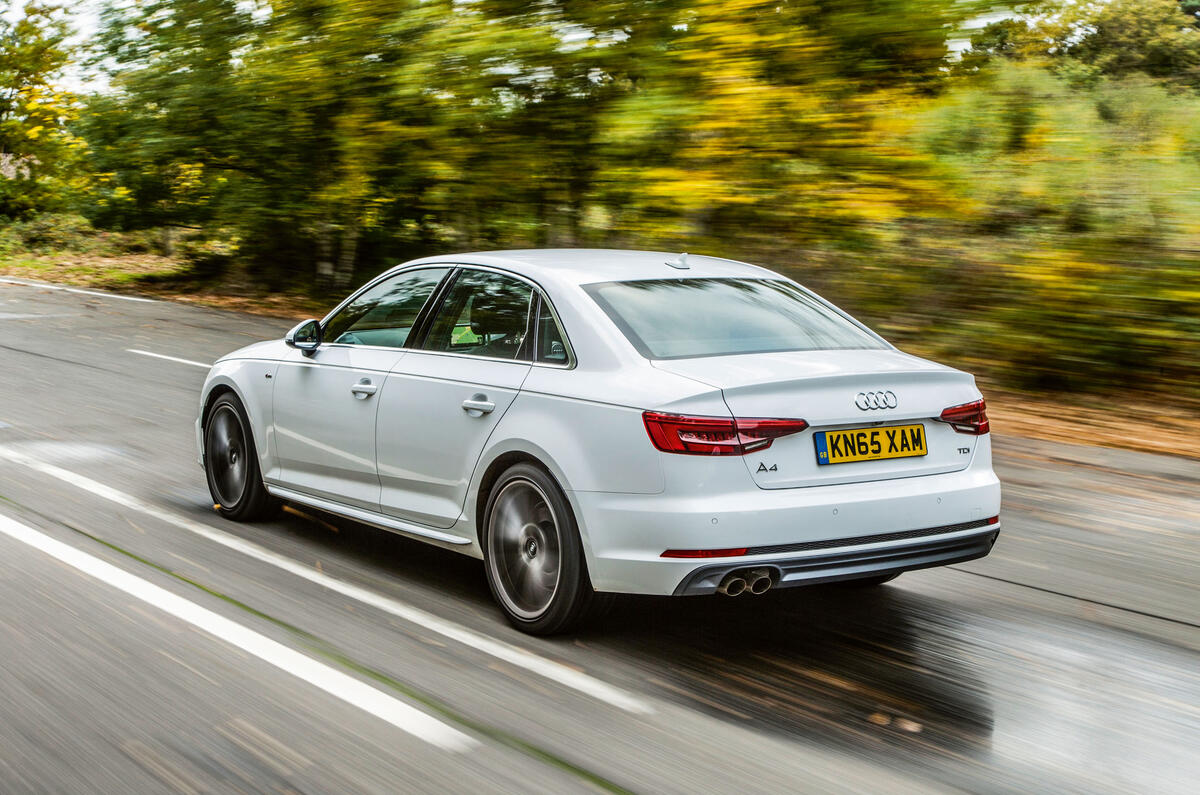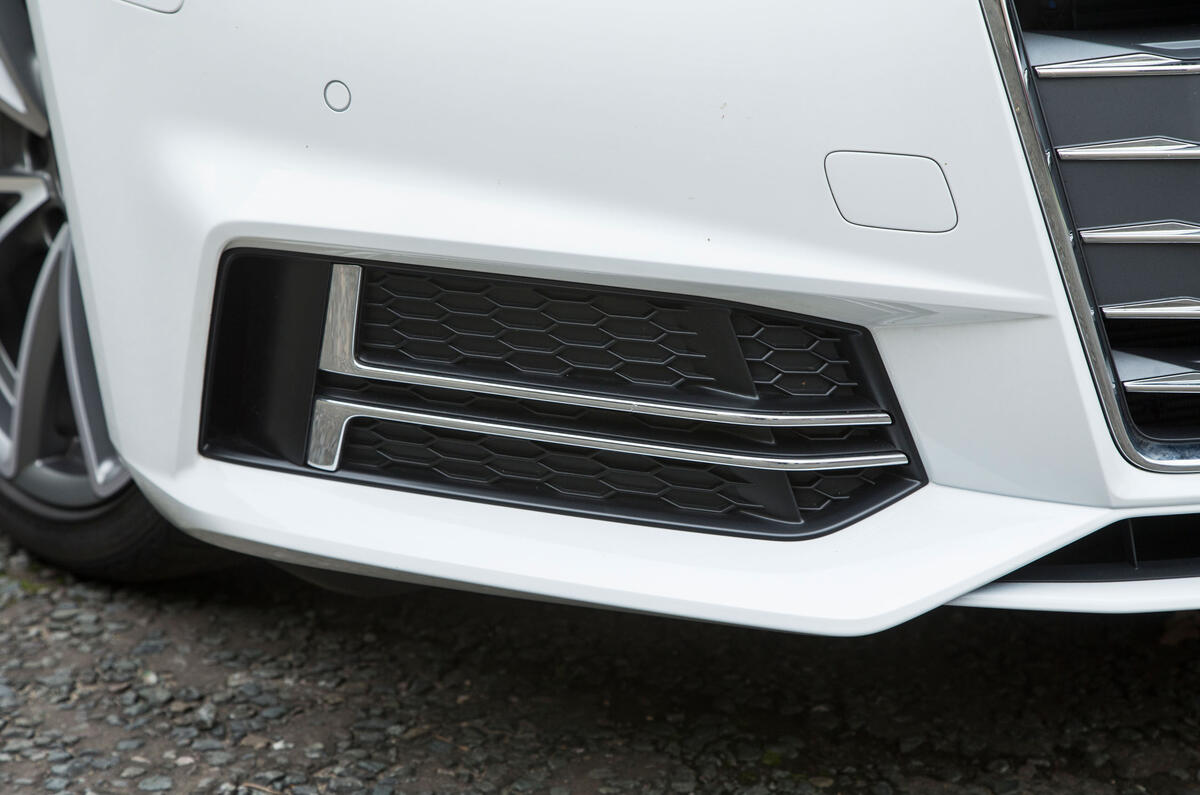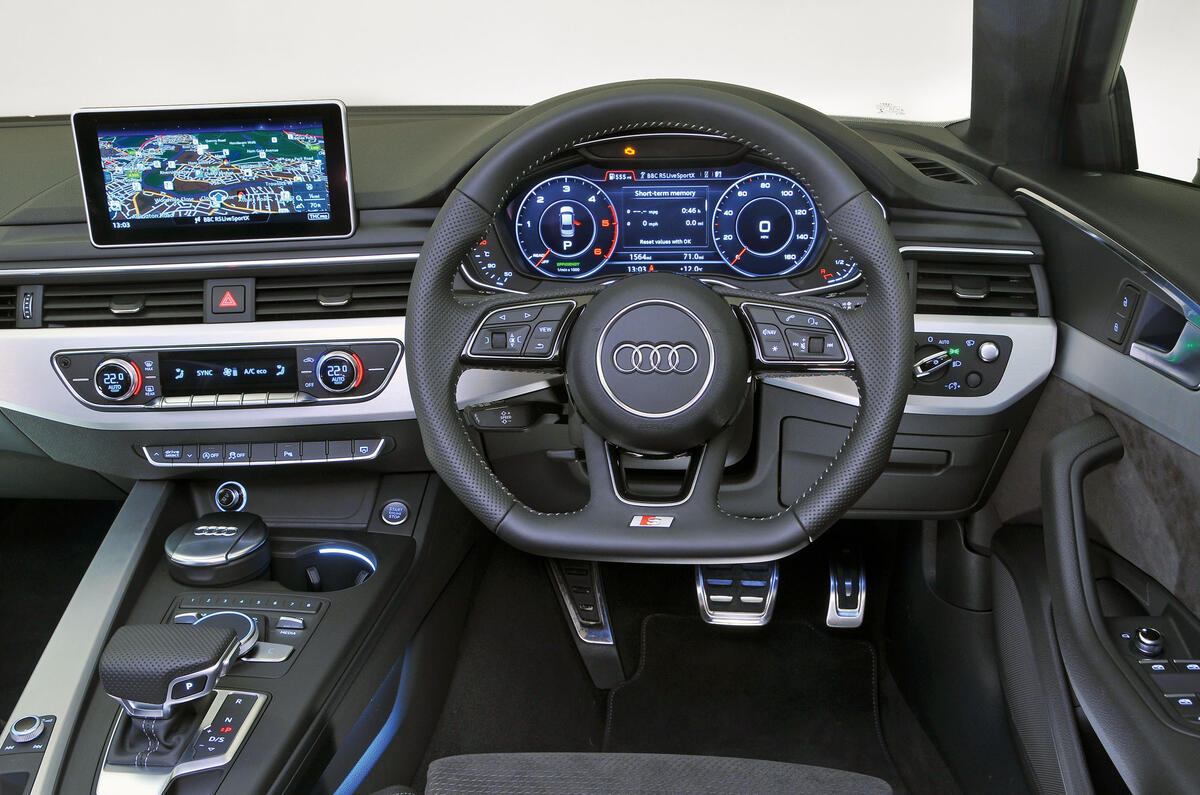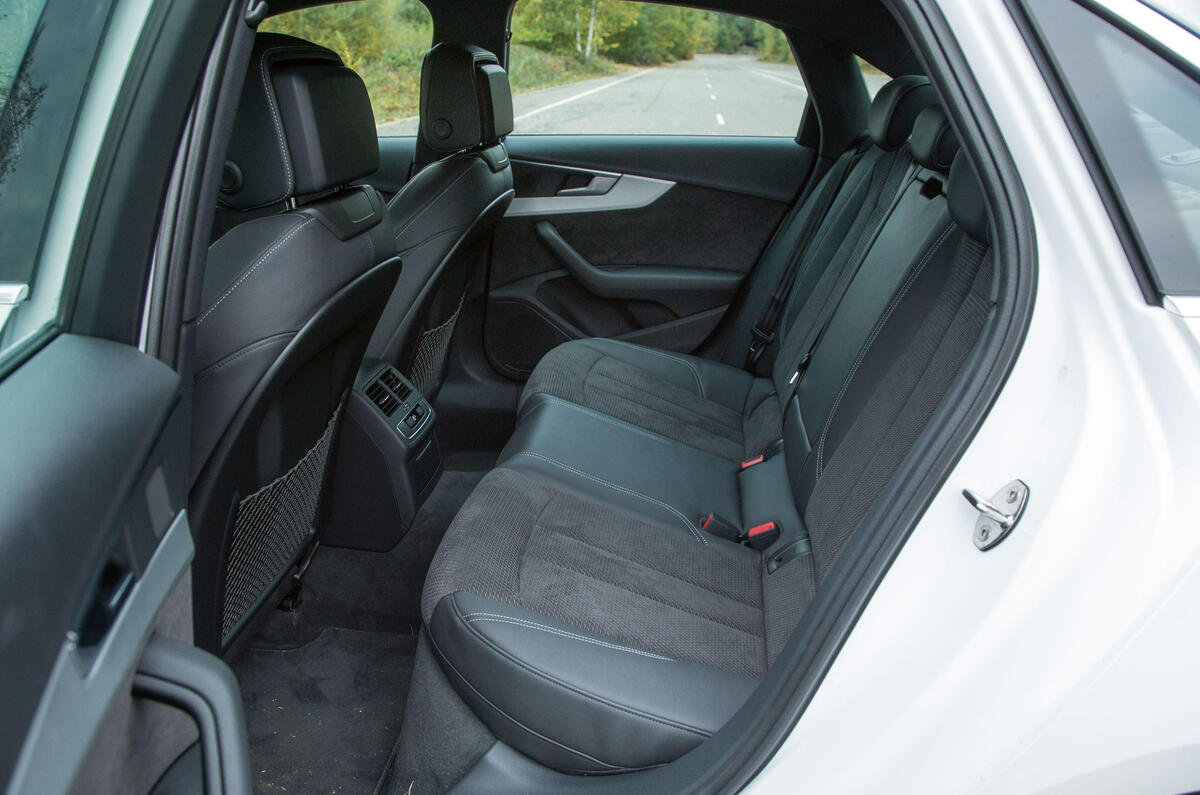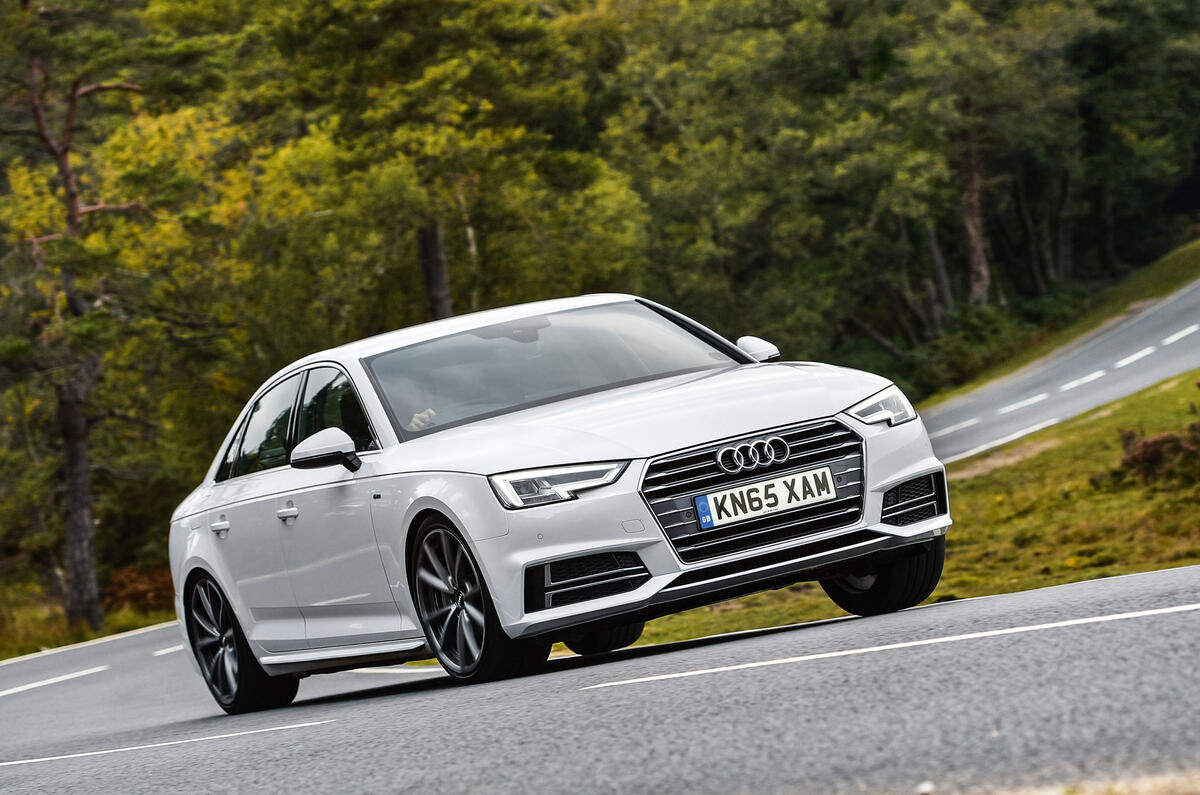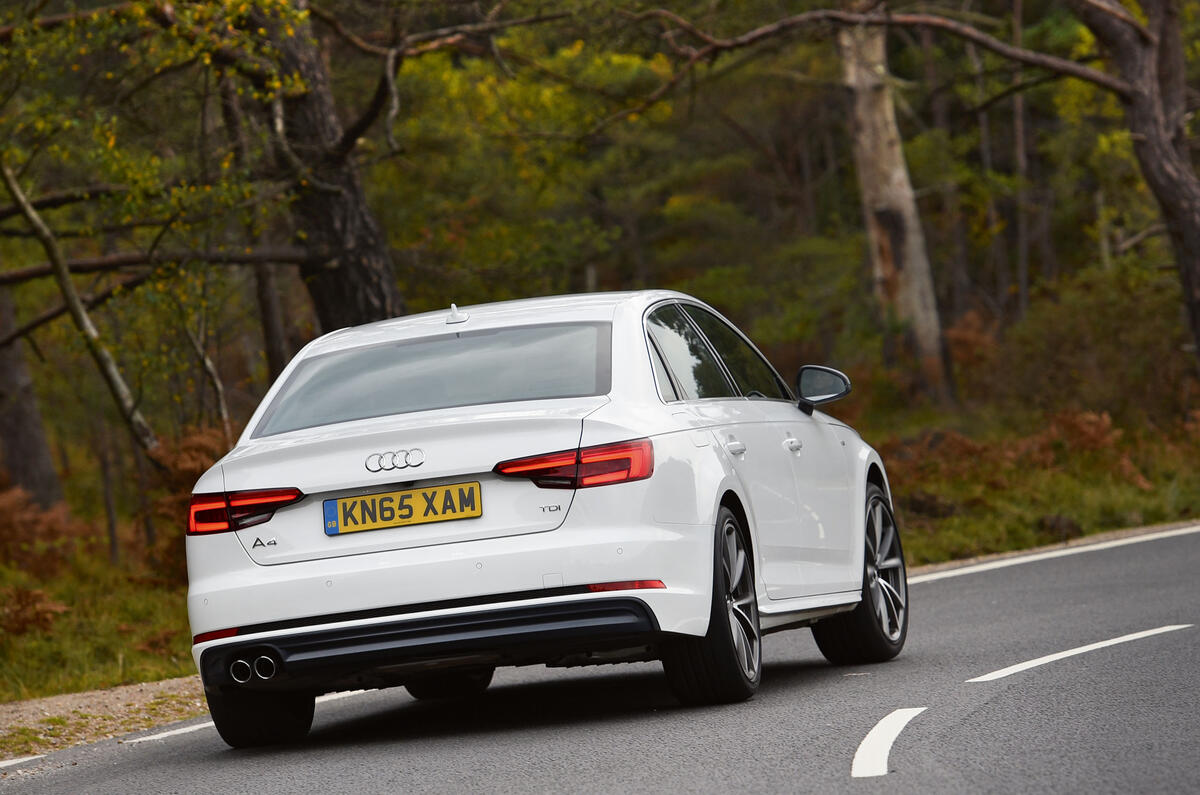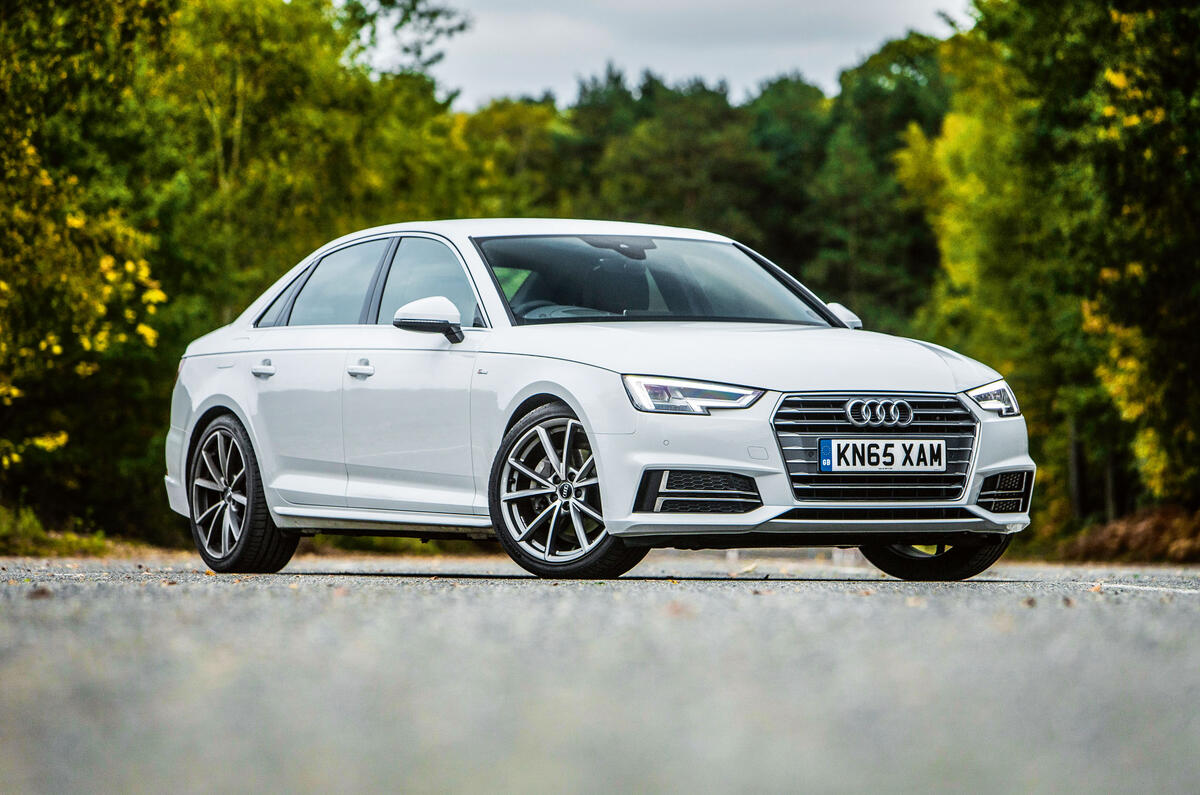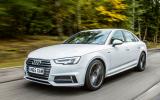Audi has conformed spectacularly to national stereotype with the new A4, giving us aerodynamic and material efficiency to the envy of all of its German compatriot manufacturers.
Using its new MLB Evo platform, it has switched to hybrid aluminium and steel construction and downsized engines in places, making certain versions 120kg lighter on kerb weight than their predecessors.
The weight hasn’t only come out of the body-in-white. A relentless programme of weight saving has shed it throughout the car, from wiring to seats to suspension to steering.
The upshot is that the new entry-level 1.4-litre turbocharged petrol model is just 1320kg dry. Plenty of examples of the original A4, launched more than two decades ago, weighed more.
An equally unstinting focus on aerodynamics puts some A4 models at a drag coefficient of just 0.23.
Eight engines are currently on offer. There are four petrol variants, starting with the 148bhp 1.4-litre TFSI and continuing through to a pair of 2.0 TFSIs up to a 349bhp 3.0-litre V6 powering not only the S4, but Audi also the S5 and Audi SQ5. The diesel range is simpler and consists of a 2.0 TDI and a 3.0 V6 TDI. The smaller capacity oilburner is available in 148bhp and 187bhp guises with both variants also coming in fleet-friendly Ultra form.
There are also two outputs from the bigger V6 diesel engine - 215bhp and 268bhp respectively, both available with four-wheel drive. The 248bhp 2.0 TFSI and the 187bhp 2.0 TDI are both available with Audi's quattro system, alongside the S4 and the forthcoming RS4.




